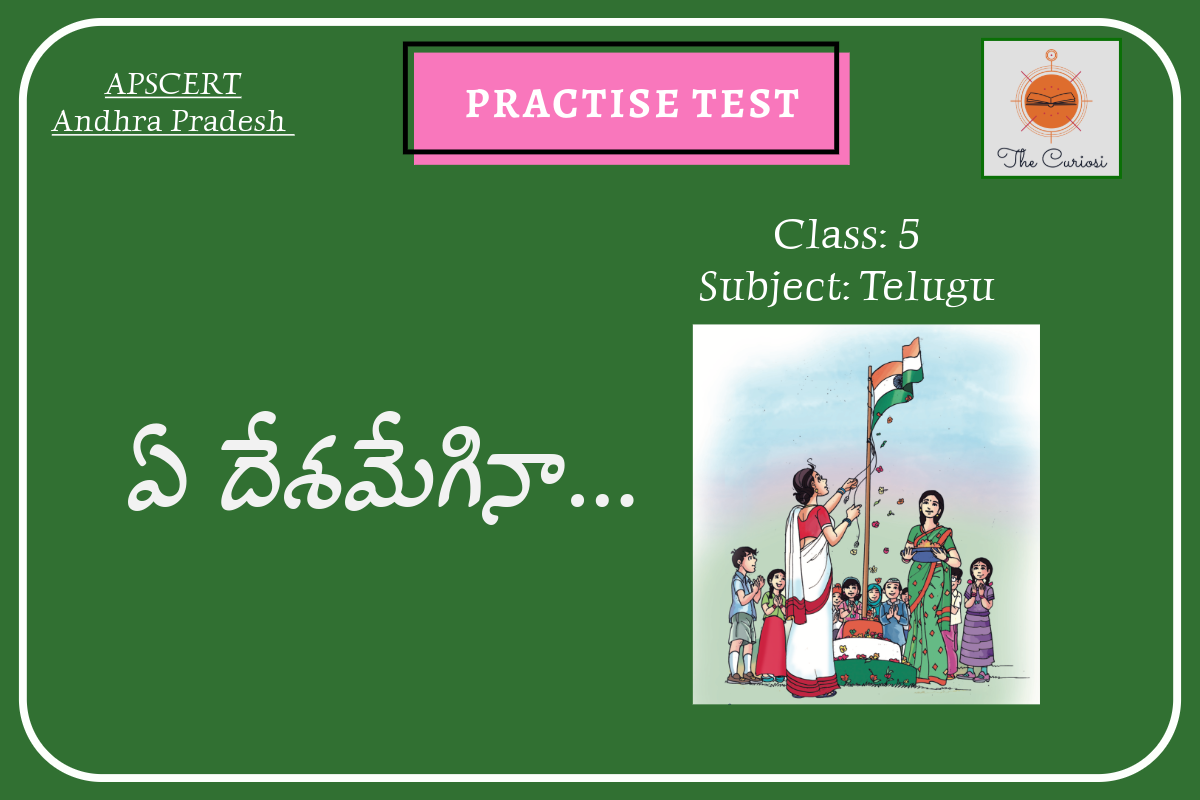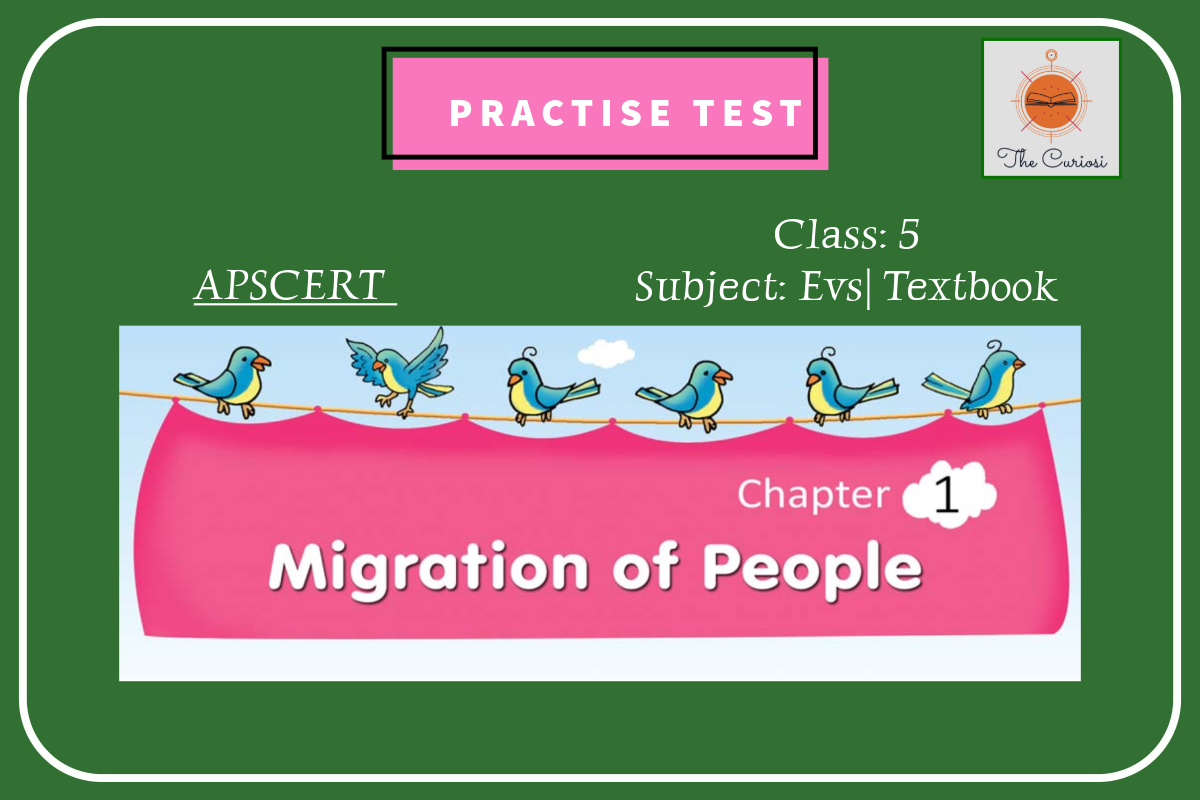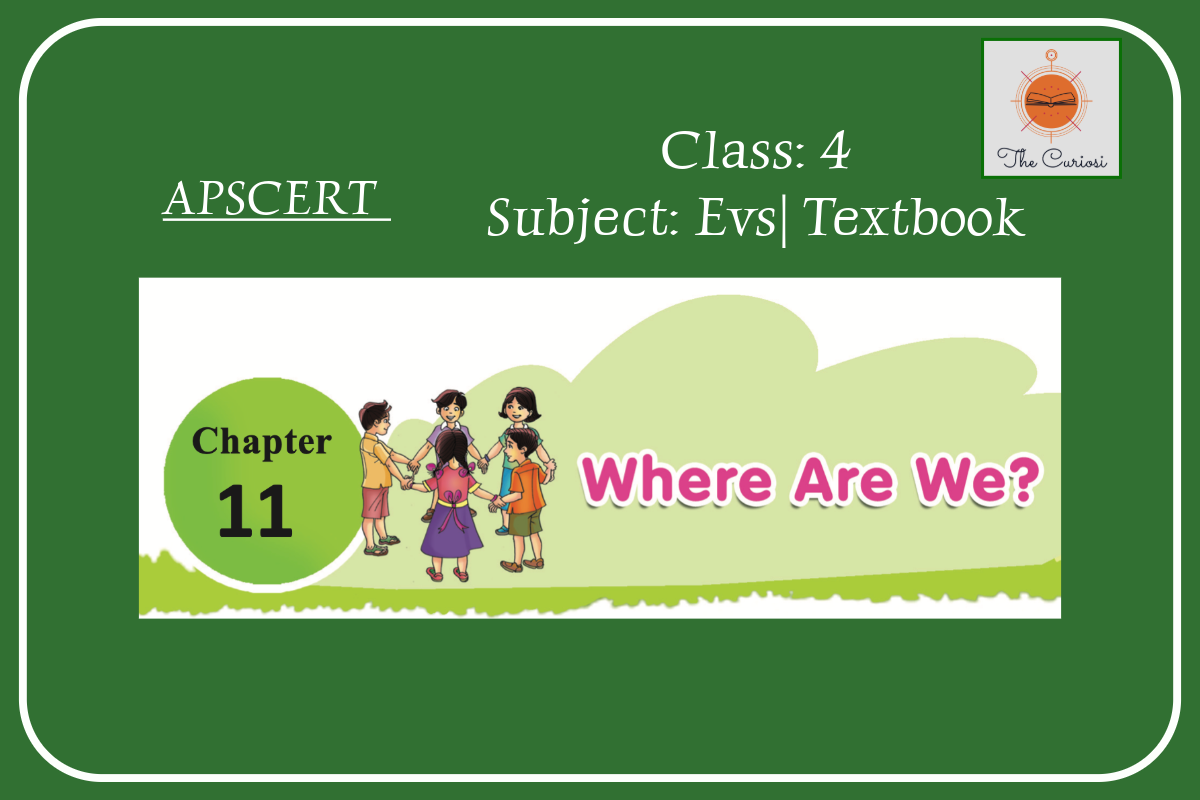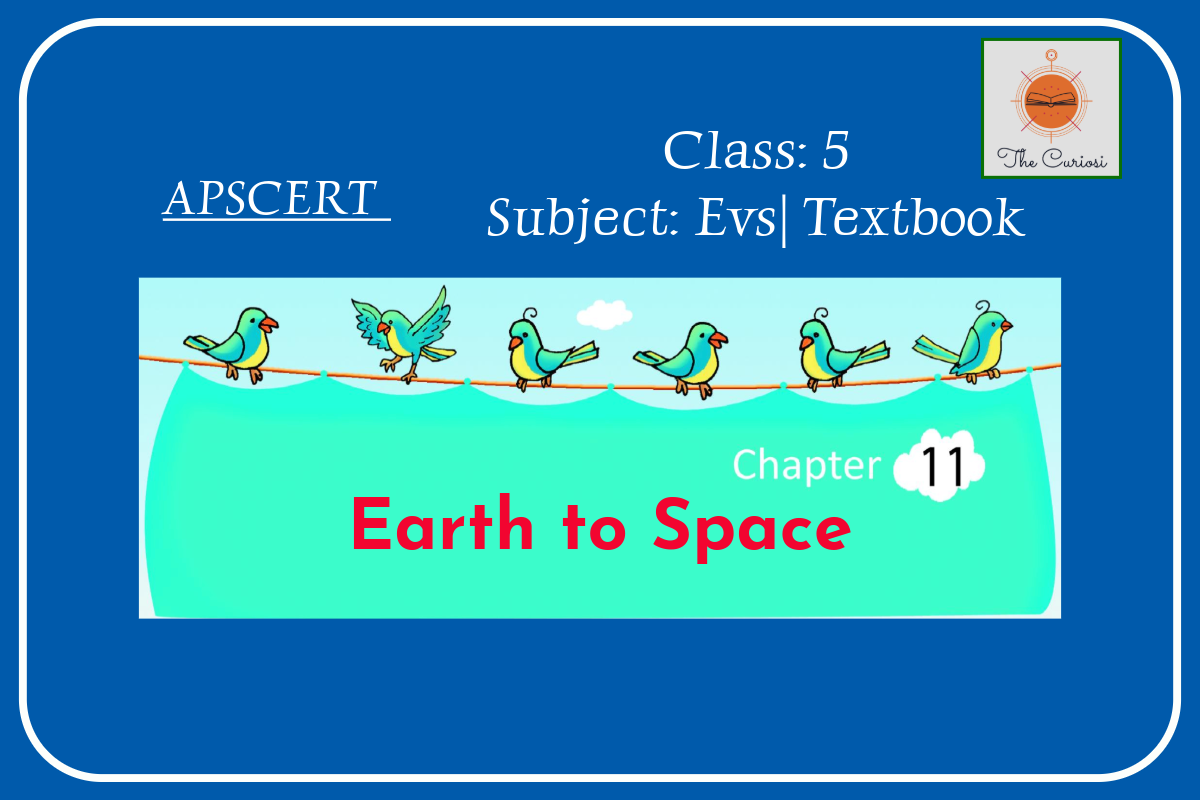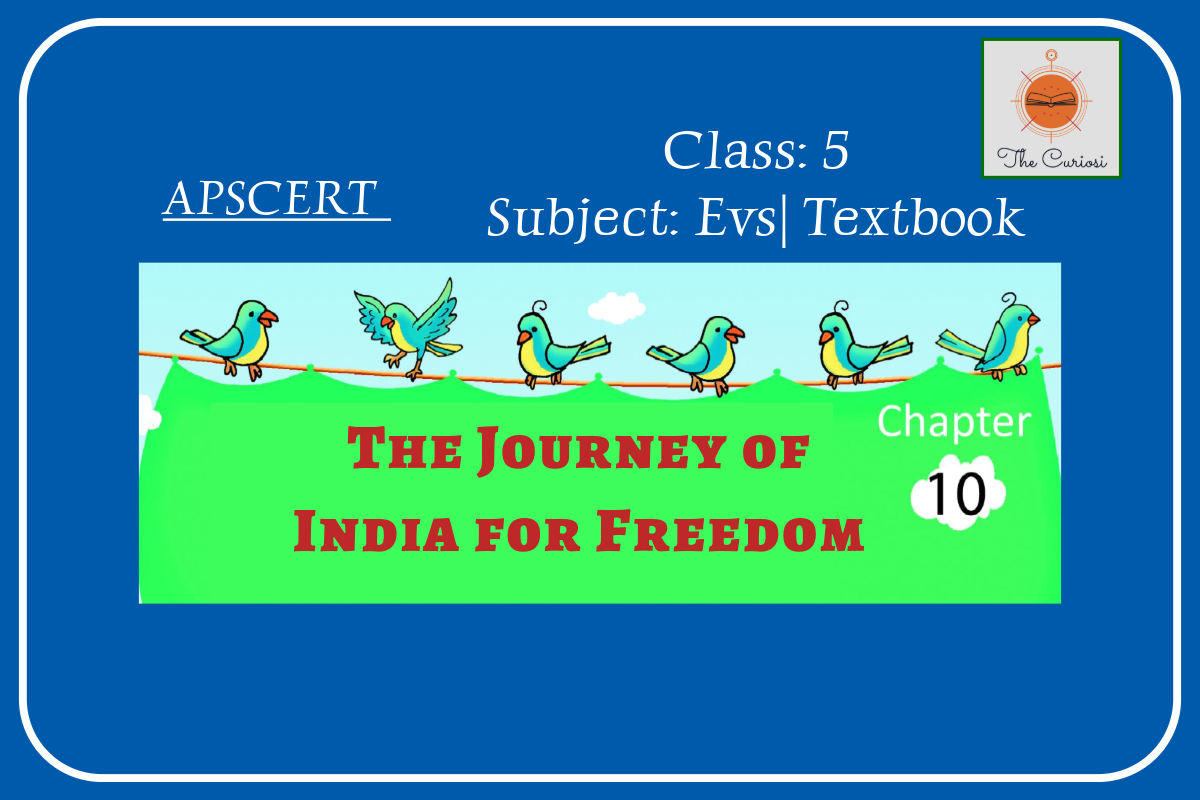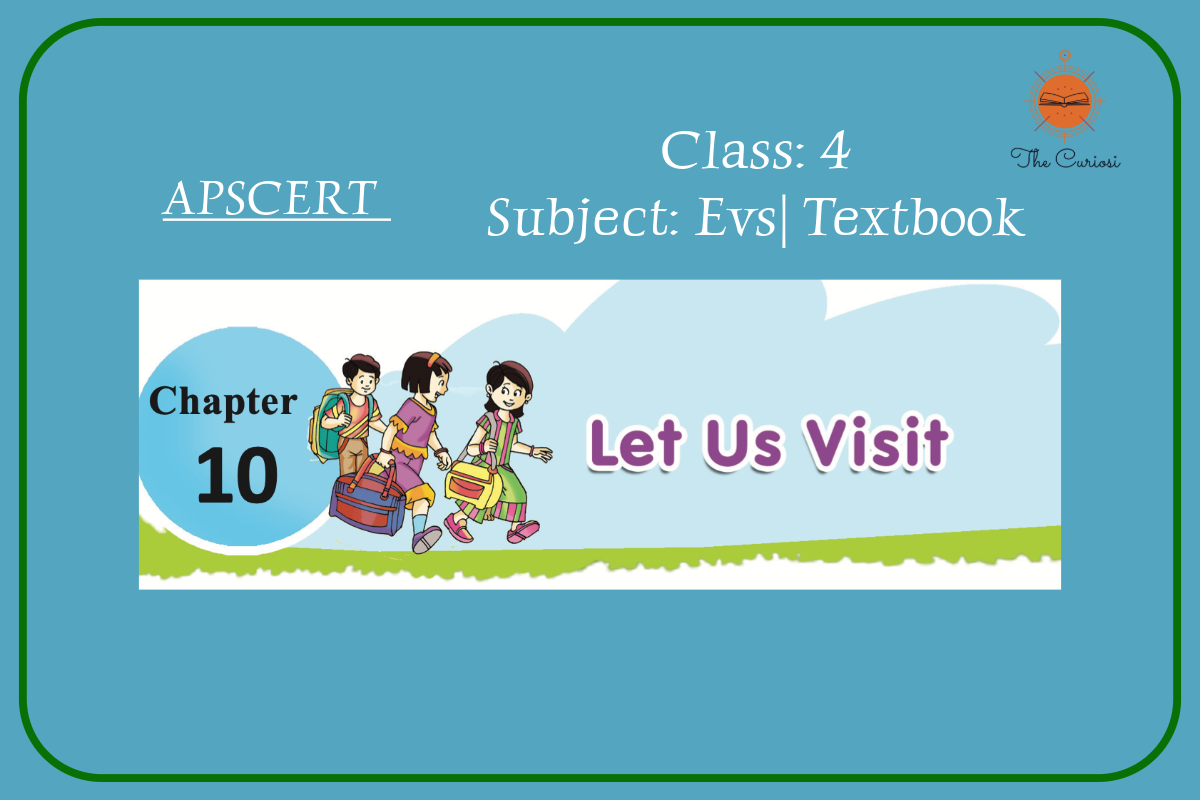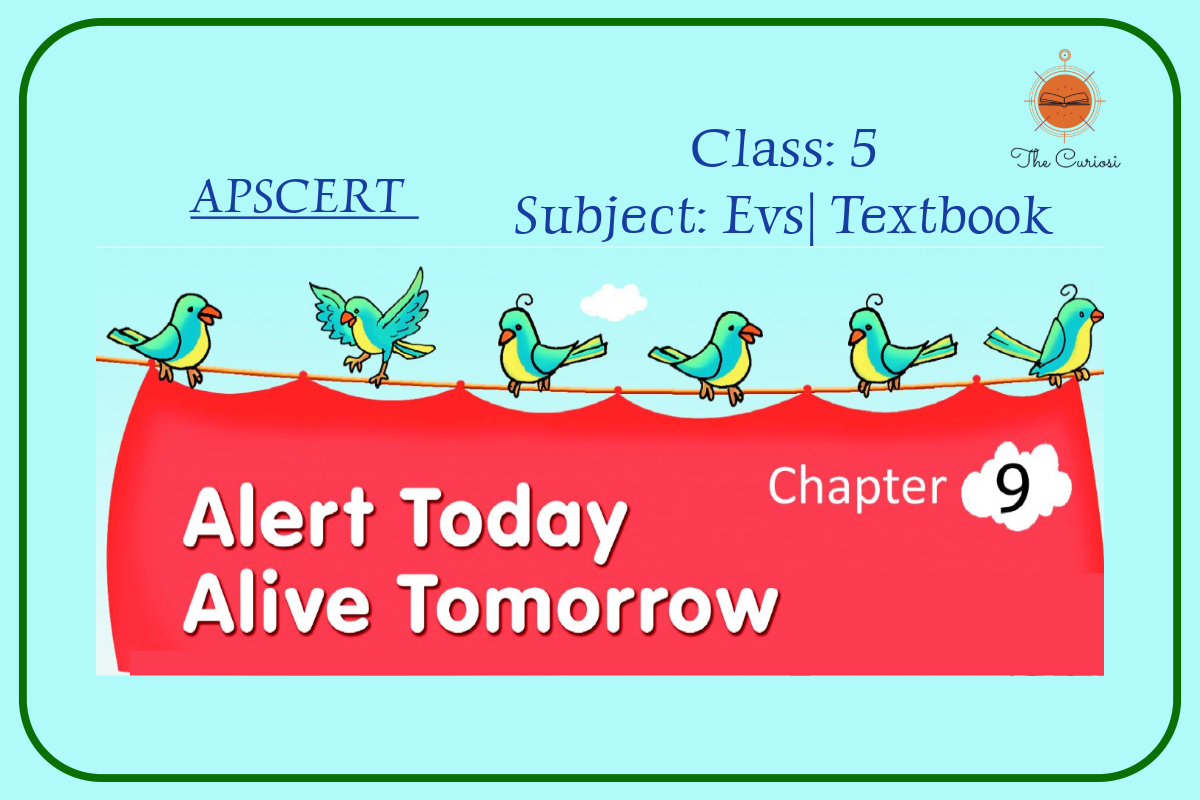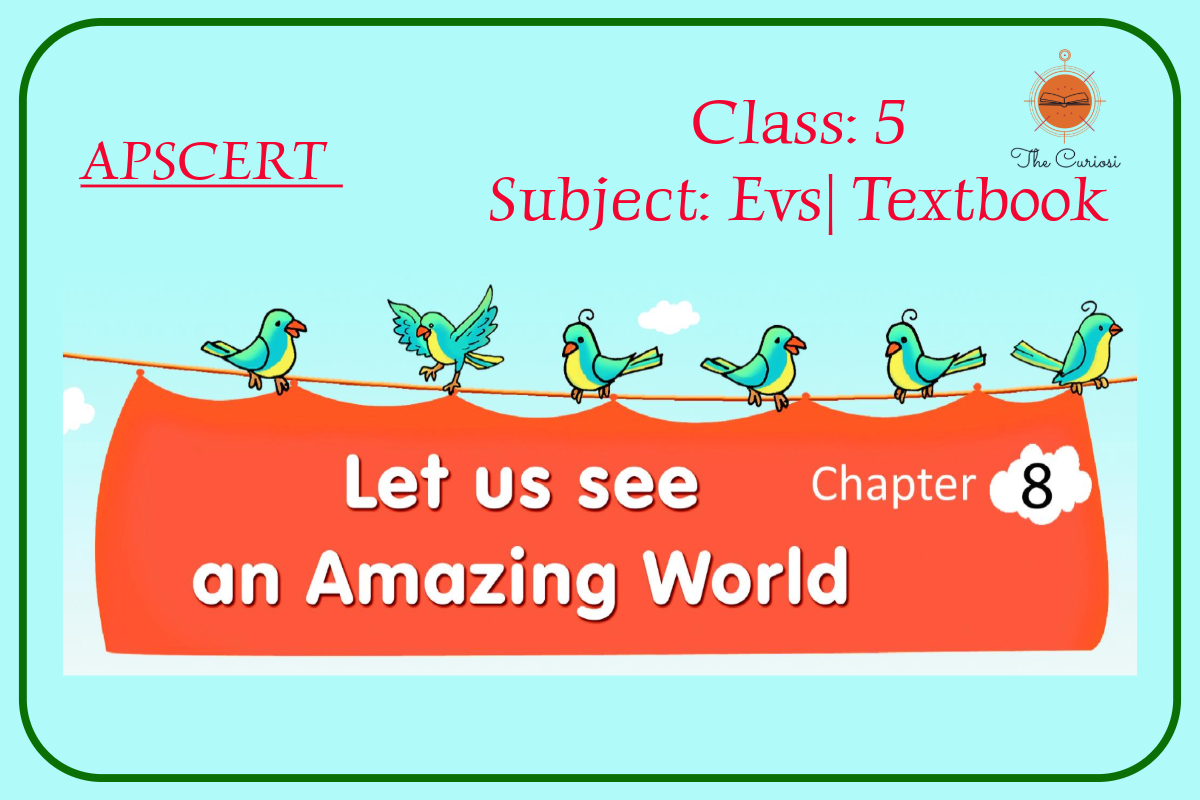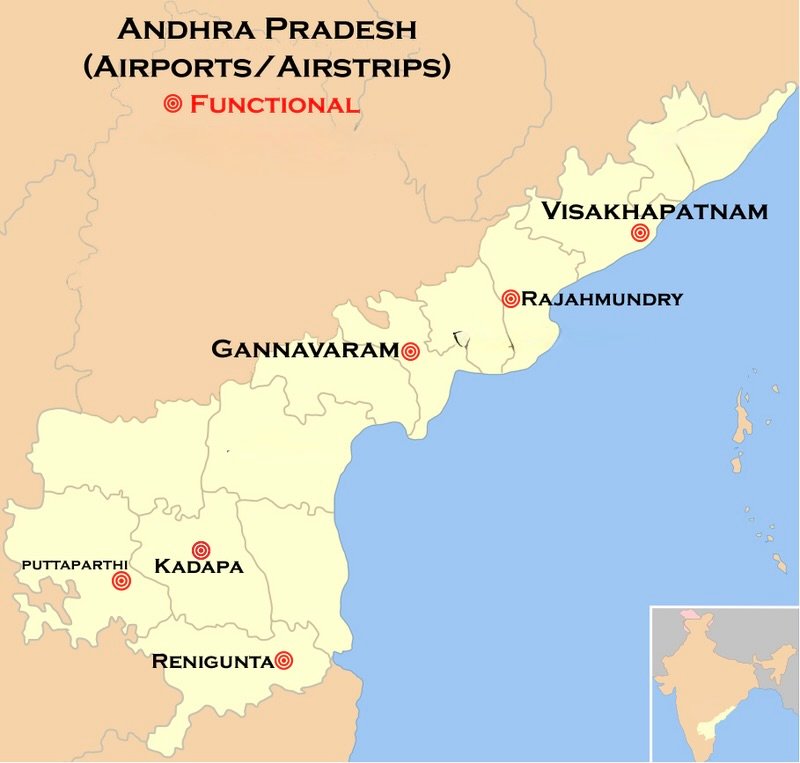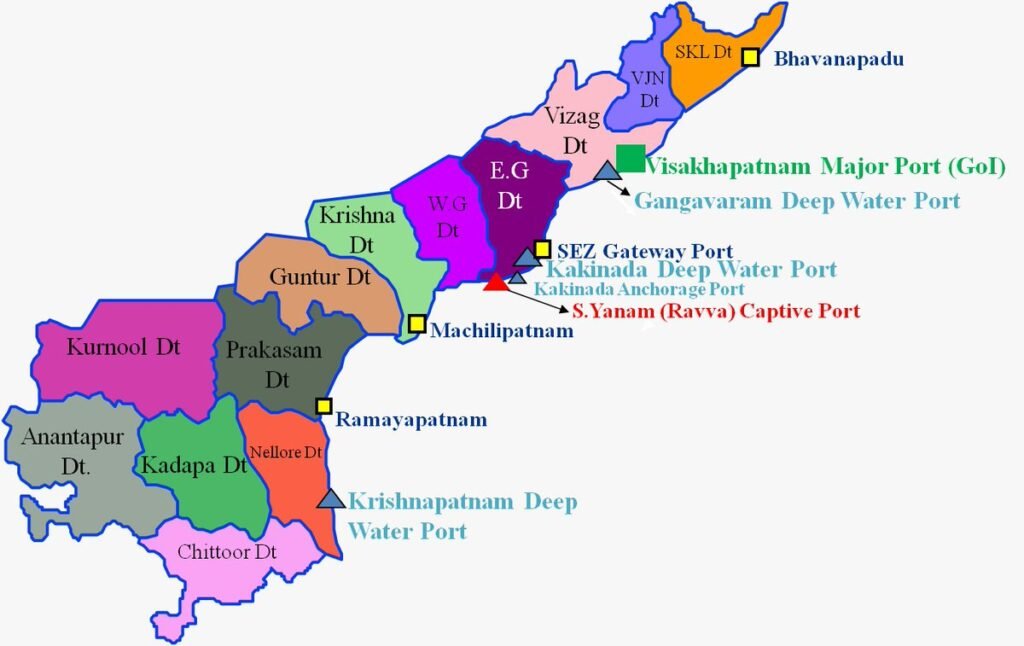Your cart is currently empty!
Author: MAHENDRA

Where Are We
Class 4 | EVS | Textboook | Chapter 11 | Solutions | Improve Your Learning
Andhra Pradesh | APSCERT
Here are the answers to the “Improve Your Learning” section from the lesson “Where Are We” for Class 4 EVS:
I. Conceptual Understanding
1. How many continents are there on the Earth? What are they?
• There are seven continents on the Earth:
1. Asia
2. Africa
3. North America
4. South America
5. Antarctica
6. Europe
7. Australia
2. Name the oceans on the Earth.
• There are five oceans on the Earth:
1. Pacific Ocean (largest and deepest)
2. Atlantic Ocean
3. Indian Ocean
4. Arctic Ocean
5. Antarctic (Southern) Ocean
3. What is rotation? What is revolution?
Rotation vs. Revolution
Rotation:
• Definition: Rotation is the spinning of the Earth on its own axis.
• Effect: It causes day and night.
• Time Taken: The Earth completes one full rotation in 24 hours (1 day).
• Example: When the Earth rotates, the side facing the Sun experiences day, while the opposite side has night.
Revolution:
• Definition: Revolution is the movement of the Earth around the Sun in an elliptical orbit.
• Effect: It causes seasons (summer, winter, spring, autumn).
• Time Taken: The Earth completes one full revolution in 365¼ days (1 year).
• Example: Different parts of the Earth receive varying amounts of sunlight throughout the year, leading to seasonal changes.
Key Differences Between Rotation and Revolution:
Feature Rotation Revolution What it does Earth spins on its axis Earth moves around the Sun Causes Day and night Seasons Time Taken 24 hours (1 day) 365¼ days (1 year) Axis or Orbit? Spins around its axis Moves in an elliptical orbit around the Sun II. Questioning and Hypothesis
4. Aruna wants to visit Vijay’s home. What questions should she ask to reach his home?
• What is your house number and street name?
• Which village or city do you live in?
• What is the landmark near your house?
• What is your pincode?
• What are the directions from the nearest bus stop or railway station?
III. Experiments and Field Observations
5. Visit your village gram panchayat office and observe its functions. Write a brief note.
(Students should visit and observe, but here’s a sample response:)
• The gram panchayat office helps in the development of the village.
• It maintains records of people, issues certificates, and conducts meetings.
• The panchayat ensures cleanliness, water supply, and road maintenance.
• It also solves local disputes and implements government schemes.
IV. Information Skills and Projects
6. Draw a map from your home to the school.
(Students should create their own map showing roads, landmarks, and important places on the way.)
V. Drawing and Model Making
7. Draw the oceans and continents on a chart and color them.
(Students should draw and use brown for continents and blue for oceans.)
VI. Appreciation
8. Write two slogans to save the Earth.
1. “Save Earth, Save Future!”
2. “Protect Nature, Protect Life!”

Earth to Space
| Class 5 | EVS Tetbook | Chapter 11
Andhra Pradesh | APSCERT
Home » Solutions » Class 5 » EVS Textbook Solutions » Chapter 11: Earth to Space
Here are the answers to the “Improve Your Learning” section from the lesson “Earth to Space” for Class 5 EVS.
I. Conceptual Understanding
1. What are the differences between latitudes and longitudes?
• Latitudes:
• These are horizontal imaginary lines on the globe.
• They run parallel to the Equator.
• They help in measuring distances north or south of the Equator.
• Longitudes:
• These are vertical imaginary lines on the globe.
• They converge at the poles and are widest at the Equator.
• They help in measuring distances east or west of the Prime Meridian.
2. What do you know about the globe?
• The globe is a miniature model of the Earth.
• It shows continents, oceans, countries, and important geographical locations.
• It helps in understanding latitudes, longitudes, and Earth’s rotation.
• The globe is useful in learning about climate zones, time zones, and different regions of the world.
3. What is the shape of the Earth?
• The Earth is round (spherical) in shape.
• Though the Earth looks flat in small areas, satellite images confirm that it is round.
• Ferdinand Magellan’s voyage around the world proved that the Earth is not flat.
• The shadow of the Earth on the Moon during a lunar eclipse is always circular, further proving its round shape.
II. Questioning and Hypothesis
4. What will happen if the Earth stops its rotation?
• There will be no day and night cycle; one side of the Earth will have continuous daylight and the other side will have continuous darkness.
• Gravity and atmospheric conditions will change, leading to severe natural disasters.
• Oceans and winds will stop moving in their normal patterns, causing climate changes and extreme weather.
• The Earth’s magnetic field may weaken, exposing us to harmful space radiation.
III. Experiments and Field Observations
5. Prepare a model of the solar system and explain it.
• Take balls of different sizes to represent the planets.
• Use a large yellow ball to represent the Sun.
• Arrange the planets in order from the Sun:
• Mercury, Venus, Earth, Mars, Jupiter, Saturn, Uranus, Neptune.
• Show the revolution of planets around the Sun using circular paths.
• Explain that planets revolve around the Sun due to gravitational force.
IV. Information Skills and Projects
6. Collect the names of artificial satellites sent by India and write about their purposes.
Satellite Name Year Purpose Aryabhata 1975 India’s first satellite for space research. INSAT Series 1983–present Used for communication and weather forecasting. IRS Series 1988–present Used for Earth observation and resource mapping. Chandrayaan-1 2008 India’s first Moon mission, discovered water on the Moon. Mangalyaan (Mars Orbiter Mission) 2013 India’s first mission to Mars, studied Mars’ surface and atmosphere. Chandrayaan-2 2019 India’s second Moon mission with an orbiter, lander (Vikram), and rover (Pragyan). V. Drawing and Model Making
7. Draw latitudes and longitudes on a ball and explain them.
• Steps:
1. Draw horizontal lines (latitudes) parallel to the Equator.
2. Draw vertical lines (longitudes) from the North Pole to the South Pole.
3. Mark the Prime Meridian (0° longitude) and the Equator (0° latitude).
4. Label important latitudes like Tropic of Cancer, Tropic of Capricorn, Arctic Circle, and Antarctic Circle.
VI. Appreciation, Values, Application to Daily Life, Biodiversity
8. Why is Earth the only habitat for human beings?
• Earth has oxygen and an atmosphere, which are essential for life.
• It has liquid water, necessary for drinking and survival.
• Earth has a moderate temperature that allows humans, animals, and plants to thrive.
• The protective ozone layer shields us from harmful radiation.
• Gravity holds everything in place and makes life possible.
• No other planet in our solar system has these perfect conditions for human survival.
These answers help students understand Earth’s features, space, satellites, and the importance of the planet in supporting life.

The Journey of India for Freedom | Class 5 | Evs Textbook | Solutions
Andhra Pradesh | APSCERT
Home » Solutions » Class 5 » EVS Textbook Solutions » Chapter 10: The Journey of India for Freedom
Here are the answers to the “Improve your Learning” section from the lesson “The Journey of India for Freedom”:
I. Conceptual Understanding
1. Explain what would have happened if freedom fighters had not sacrificed their lives for us?
If freedom fighters had not sacrificed their lives, India would still be under British rule. Indians would not have the rights and independence they enjoy today. The country’s progress in various fields such as education, economy, and technology would have been hindered.
2. Write a brief note on the Indian freedom movement.
The Indian freedom movement was a long struggle against British rule. It began with early revolts like the 1857 Rebellion, followed by the formation of the Indian National Congress in 1885. Mahatma Gandhi led non-violent movements like the Non-Cooperation Movement (1920), Salt Satyagraha (1930), and Quit India Movement (1942). Finally, India gained independence on August 15, 1947.
3. Name some of the freedom fighters you know.
Some of the notable freedom fighters are:
• Mahatma Gandhi (led non-violent movements)
• Subhas Chandra Bose (led the Indian National Army)
• Bhagat Singh (fought against British rule)
• Rani Lakshmibai (fought in the 1857 revolt)
• Sardar Vallabhbhai Patel (worked for India’s unity)
• Jawaharlal Nehru (India’s first Prime Minister)
• Dr. B.R. Ambedkar (drafted the Indian Constitution)
II. Questioning and Hypothesis
4. What would have happened if Mahatma Gandhi had not arrived in India from South Africa?
If Mahatma Gandhi had not returned from South Africa, India’s independence struggle might have taken a different course. His principles of non-violence and civil disobedience played a crucial role in uniting people against British rule. Without him, movements like the Salt Satyagraha and Quit India Movement might not have happened.
III. Experiments and Field Observations
5. Why do people install statues?
People install statues to honor great personalities who contributed to society. Statues remind us of their sacrifices, inspire future generations, and preserve history.
IV. Information Skills and Projects
6. Collect the pictures of our freedom fighters and prepare an album.
(This is a project-based activity. You can collect images of Mahatma Gandhi, Bhagat Singh, Subhas Chandra Bose, Rani Lakshmibai, etc., and create an album.)
V. Drawing and Model Making
7. Draw the National Flag and color it.
(This is a drawing activity. Draw the Indian flag with saffron, white, and green colors and a blue Ashoka Chakra in the center.)
VI. Appreciation, Values, Application to Daily Life, Biodiversity
8. How do you appreciate the sacrifices of Indian freedom fighters? Write a brief note.
We should always remember and respect the sacrifices made by our freedom fighters. Their efforts gave us independence, and we should honor them by being responsible citizens. This includes following laws, voting, respecting others, and working towards the progress of our nation.

Let us visit | Class 4 | Evs Textbook | Chapter10
Andhra Pradesh | APSCERT
Here are the answers to the “Improve Your Learning” section along with the questions:
I. Conceptual Understanding
1. Name some festivals that you celebrate in your village.
• Some festivals celebrated in my village include Pongal, Diwali, Ugadi, Sankranti, and Holi.
2. Name the national festivals you celebrate in your school.
• National festivals celebrated in my school include Republic Day (January 26), Independence Day (August 15), and Gandhi Jayanti (October 2).
3. What places would you like to visit?
• I would like to visit historical places like the Charminar, Taj Mahal, and Qutub Minar, as well as natural places like waterfalls, hill stations, and wildlife sanctuaries.
II. Questioning and Hypothesis
4. What questions will you ask your teacher to know about the purpose of a bird sanctuary?
• Some questions I would ask my teacher about a bird sanctuary are:
1. What is a bird sanctuary?
2. Why are birds protected in sanctuaries?
3. Can we visit a bird sanctuary?
4. How do birds from different countries come here?
5. How can we help in protecting birds?
III. Experiments and Field Observations
5. Visit the holy places in your village. Write your findings.
• After visiting the holy places in my village, I observed:
1. The temple/mosque/church is an important place for worship.
2. Many people visit these places for prayers and rituals.
3. Special festivals and ceremonies are held there.
4. People maintain cleanliness and follow traditions.
IV. Information Skills and Projects
6. Prepare a list of historical places in your surrounding villages/mandal.
• Some historical places in my surrounding villages/mandal are:
1. Kondapalli Fort
2. Amaravati Stupa
3. Lepakshi Temple
4. Golconda Fort
(I took help from my parents and elders to list these places.)
V. Drawing and Model Making
7. Draw on a chart representing festivals like a lamp for Diwali, a tree for Christmas, and a half moon for Ramzan.
• I can draw a chart with:
1. A lamp for Diwali
2. A Christmas tree for Christmas
3. A crescent moon for Ramzan
VI. Appreciation
8. Have you ever seen a Jatara? What makes you happy in the event?
• Yes, I have seen a Jatara in my village. I enjoy the vibrant atmosphere, the colorful decorations, folk performances, and the variety of food stalls. It is a joyful event where people come together to celebrate.

Alert Today, Alive Tomorrow
Class 5 | Evs Textbook | Chapter 9
Home » Solutions » Class 5 » EVS Textbook Solutions » Chapter 9: Alert Today, Alive Tomorrow
Here are the answers to the “Improve Your Learning” section from the lesson “Alert Today, Alive Tomorrow” for Class 5 EVS
I. Conceptual Understanding
1. Why should we take safety measures?
• Safety measures help prevent accidents and injuries.
• They ensure that people remain safe in daily activities like traveling, working, and playing.
• Following safety measures protects both individuals and society.
2. What is first aid and when is it needed?
• First aid is the immediate care given to an injured or sick person before medical help arrives.
• It is needed in case of accidents, burns, snake bites, fractures, or any emergency to prevent the condition from worsening.
3. Aparna’s grandfather was bitten by a snake. What kind of first aid is suggested to him?
• Keep the affected person calm and still to slow down the spread of venom.
• Do not try to suck out the venom.
• Tie a cloth or bandage lightly above the bite to slow the venom’s spread.
• Take the person to the nearest hospital or call 108 ambulance services immediately.
II. Questioning and Hypothesis
4. What questions would you ask to know more about 108 Services?
• How quickly can 108 services respond to an emergency?
• What types of emergencies does 108 handle?
• What information should we provide while calling 108?
• How does the ambulance team provide first aid before reaching the hospital?
• Is the 108 service available 24/7 in all areas?
III. Experiments and Field-Based Observations
5. Visit an accident spot which is nearby. Find the causes of the accident and record your observations.
• Possible causes of accidents:
• Over-speeding
• Not following traffic signals
• Not wearing helmets or seat belts
• Walking or playing on the road carelessly
• Observations should include:
• The condition of the road (slippery, damaged, crowded)
• Actions of drivers and pedestrians before the accident
• Response time of emergency services
IV. Information Skills and Projects
6. Discuss the precautions to be taken while using fireworks on Diwali.
• Always burst crackers in an open space under adult supervision.
• Keep a bucket of water or sand nearby for emergencies.
• Wear cotton clothes to avoid catching fire.
• Avoid using fireworks near flammable materials.
• Do not relight a firework that did not burst the first time.
V. Drawing Pictures and Model Making
7. Draw a mind map showing precautions we take while traveling on a bus.

• Stand in a queue while boarding.
• Do not push others while getting on or off.
• Hold handrails for support.
• Avoid talking to the driver while he is driving.
• Never put hands or head outside the window.
VI. Appreciation
8. How do you appreciate the services of 108 and 104?
• 108 provides emergency medical services and helps save lives in accidents and medical crises.
• 104 provides medical advice over the phone, helping people access healthcare easily.
• These services are free and available 24/7, making them accessible to all.
• The ambulance staff and medical professionals work hard to save lives, so they deserve our respect and gratitude.

Let Us See an Amazing World
Andhra Pradesh | APSCERT
Home » Solutions » Class 5 » EVS Textbook Solutions » Chapter 8: Let Us See an Amazing World
Here are the answers to the “Improve Your Learning” section from the lesson Let Us See an Amazing World (Class 5 EVS)
I. Conceptual Understanding
1. Name the means of transport used to travel abroad.
• Airways: Aeroplanes, helicopters.
• Waterways: Ships, cargo ships, ferries.
2. Why do people travel abroad?
People travel abroad for various purposes, such as:
• Business: To trade and expand their business.
• Employment: To work in other countries.
• Education: To pursue higher studies.
• Tourism: To visit famous places.
• Sports: To participate in international games and championships.
3. Explain the terms import and export.
• Import: Buying goods from another country. Example: India imports Kiwi, Durian fruit, and Dragon fruit from other countries.
• Export: Selling goods to another country. Example: India exports mangoes, bananas, and pomegranates to foreign countries.
II. Questioning and Hypothesis
4. What type of questions would you like to ask your mother about the availability of apples in your village?
• Where do the apples in our village come from?
• Are apples grown in our village or imported from other places?
• How do apples reach the local market?
• Why do apples cost more than some other fruits?
• Are there any varieties of apples available?
III. Experiments and Field Observations
5. Visit a nearby paddy field and observe the process of exporting paddy, then prepare a report.
(Students should visit a local paddy field and observe the process. Example report:)
• Farmers grow paddy and harvest it when the grains are ready.
• After harvesting, the paddy is sent to mills for processing.
• Some of the paddy is kept for local use, while the extra paddy is packed in bags and sent to nearby cities.
• Large quantities of paddy are transported by trucks and ships to other countries for export.
6. Collect information about important tourism places around your village or town and prepare an album.
(Students should collect pictures and details of tourist spots. Example:)
• Tirupati Temple: Famous pilgrimage site.
• Lepakshi Temple: Historical site with ancient sculptures.
• Borra Caves: Beautiful natural caves.
• Lambasingi: Known as Andhra Kashmir for its cold climate.
IV. Drawing Pictures and Model Making
7. Identify and label different sea ports and airports on the map of Andhra Pradesh.
Major Airports in Andhra Pradesh:
• Visakhapatnam International Airport
• Vijayawada Airport
• Tirupati Airport
• Rajahmundry Airport

Major Sea Ports in Andhra Pradesh:
• Visakhapatnam Port
• Krishnapatnam Port
• Kakinada Port
• Gangavaram Port

V. Appreciation
8. What are the advantages of an airport?
• Fastest mode of transport for long distances.
• Helps people travel internationally for business, education, and tourism.
• Allows quick delivery of goods and cargo between countries.
• Supports economic growth by increasing trade and tourism.
• Provides employment opportunities for many people.
Maa badi e-magazine march 2025
Andhra Pradesh |
Maa Badi e-magazine| March 2025
మా బడి e మాస పత్రిక | మార్చి 2025
In this Magazine: Explore an engaging collection of articles and activities in this magazine, covering children’s games, language learning (Learn a Word & GK), moral and inspirational stories, health awareness, art and drawing, environmental consciousness, and fun-filled interactive sections. This edition also includes Telugu language learning, historical insights, and important educational resources. Perfect for young learners and curious minds!
మన కోసం……..- బాలల గేయాలు
- Learn a Word & GK
- సద్వినియోగమే సంపదకు దారి
- హిమానీనదాల సంరక్షణ
- కథాలోకం
1. వీర వృషభం
2. తెలివైన కోడలు
3. డోలు దరువు
4. గొప్పత్యాగం - స్ఫూర్తి ప్రదాత – నింగికెగసిన తార
- పద్యపరిమళాలు
- మగువా! లోకానికి తెలుసా నీ విలువా
- మంచి పుస్తకం (స్వేచ్ఛ -ఓల్గా)
- సత్య శోధన (మహాత్ముని ఆత్మకథ)
- చిన్నారుల చిత్రలేఖనం
- ప్రముఖవ్యాసం (మహిళా దినోత్సవం )
- తెలుసుకుందాం! (What Are Articles?)
- నేను కథరాస్తా!
- మరికొన్ని మనకోసం!
- తెలుగు పదాల ఆట
- ఈ మాసపు పాఠాలు
- సూక్తి సుధా కలశం
- Important websites and apps
